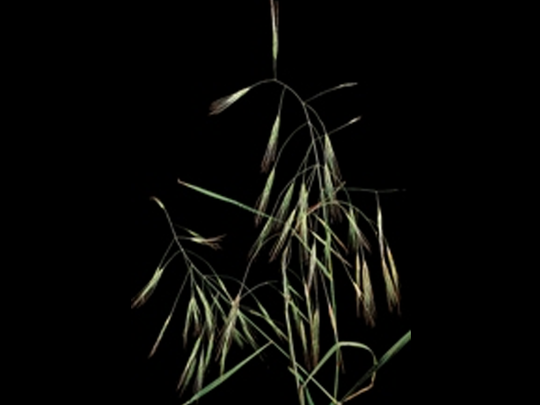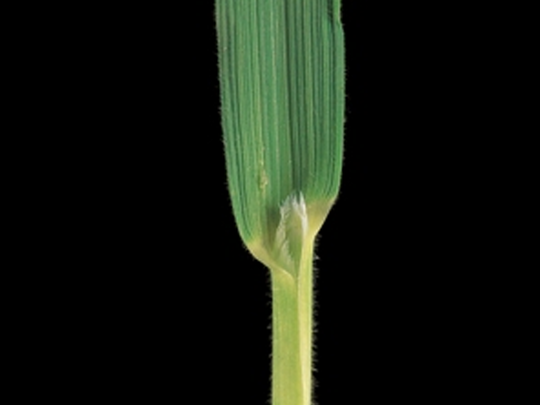Drooping brome, or cheat grass as it is also known, is an annual, hardy tussock grass. Main flowering season May to June. Often flowers again in autumn. Its name is derived from the long, pendulous panicles which bear drooping spikelets. Drooping brome grows on poor soils on roadside verges, rubbish dumps, railway embankments and wasteland in warm, dry positions. It is also commonly found on farmland, where it sheds its seed and lodges in perennial fodder and seed crops. Careful maintenance of field margins can prevent it spreading to the main crop. Drooping brome is regarded as a troublesome weed in farm crops. The long awns clog the filters and interfere with threshing during harvest. Since it is neither a valuable fodder grass (feed value 2) nor suitable as a cover crop, drooping brome has no commercial significance.
| Leaf | Leaf rolled in the bud, leaf sheath closed and covered with soft hairs. Leaf blade lightly ribbed and covered with short hairs. Ligule short to medium length, often split. Auricles absent. |
| Culm | More or less geniculate, approx. 50–80 cm tall, occasional late flowers in autumn. Approx. 15 cm long, secund panicle (arranged on one side only) at the end of the culm. |
| Inflorescence | Mainly paired racemes (false panicle) arranged on one side only (secund). Lower nodes of main axis each with more than 2 long, slender side branches. Drooping spikelets 10–15 mm long, flattened, green at first turning red to reddish-purple later. More than 4 florets on each spikelet, some of which are sterile. Glumes 8–10 mm long and awl-shaped. Lemmas have long, straight, rough awns approx. 15 mm long. |
| Fruit | Slender grains 10 mm long and 1.5 mm wide. Lemmas dark brownish-red, slightly hairy with well-defined central vein, palea deep groove. Slender pedicel approx. 3 mm long. Caryopsis dark brown with ribbed dorsal side and furrow running along the ventral side. |

